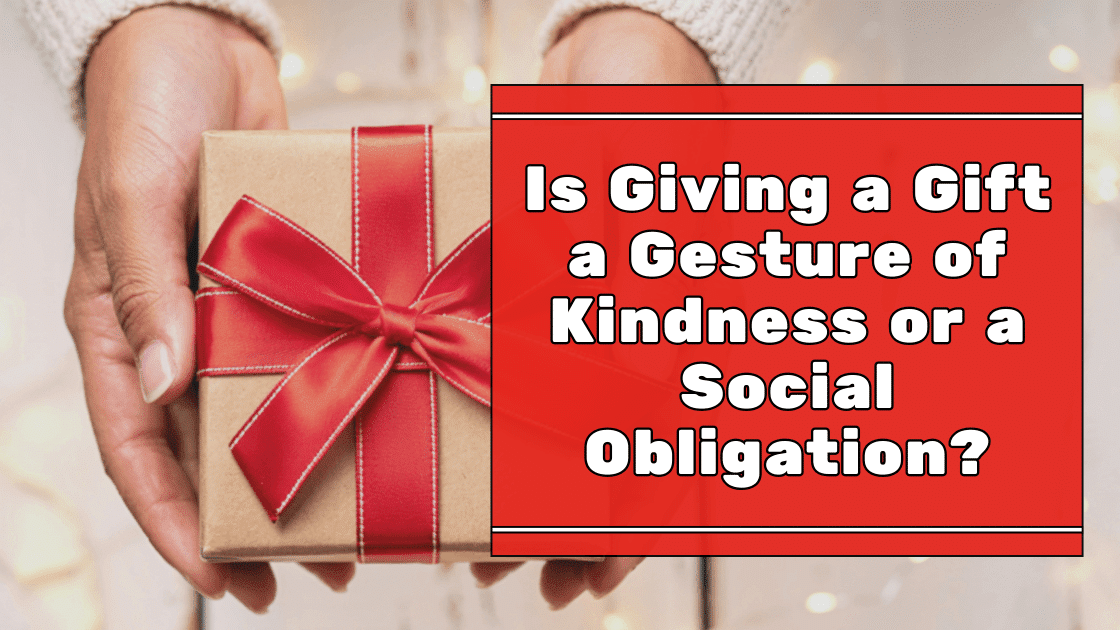Holiday gifting is huge. Every year, consumers collectively spend staggering sums, and most people say they feel at least some pressure to get it right.
That mix of generosity and anxiety is exactly why intention matters. When a gift is chosen with empathy and presented with care, it reads as kindness.
When it is rushed, performative, or mismatched to the moment, it can feel like a box you had to check. Let’s unpack how to keep gifting thoughtful, low-stress, and true to you.
Understanding the Psychology Behind Gift Giving
Gifts carry social meaning. They can say thank you, I see you, I’m proud of you, or I want to stay connected. Psychologists point to two big forces at play:
- Reciprocity: When someone gives us something, we often feel an urge to respond in kind. That can strengthen relationships, but it can also create pressure if we are not careful.
- Prosocial joy: Spending time and resources on others can boost our mood. The catch is that the joy is strongest when we match what the recipient actually values, not what we wish they valued.
What this means for you: prioritize fit over flash. A modest gift that solves a real need, reflects a shared memory, or equips someone for their next move will land better than a pricey guess. If you are torn between clever and clear, choose clear.
Pro tip: Ask one question before buying anything. “What problem, aspiration, or inside joke will this gift carry forward?” If you cannot answer in a sentence, keep looking.
The Different Types of Gifts: Intentions and Meaning
Not all gifts serve the same purpose. Knowing which lane you are in helps you choose with confidence.
- Thoughtful gifts: These reflect the person’s current season. Examples include a beautifully bound planner for a new manager, a set of label-free travel bottles for a frequent flier, or a framed photo from a milestone.
- Practical gifts: Daily-use items with an upgrade in quality. Think premium drinkware, a power bank that actually lasts, or a carry-on organizer that saves time at security.
- Experiential gifts: Tickets, classes, tastings, or a reservation to somewhere hard to book. Experiences tend to spark stories, which is why they are powerful for relationships.
- Symbolic or sentimental gifts: Objects that mark belonging or achievement. These can be small but meaningful, like a custom key tag engraved with a date or coordinates.
- Obligatory gifts: Office exchanges, host gifts, or situations where etiquette matters more than personalization. Keep these tasteful, neutral, and universally useful.
How to decide: If the relationship is close, thoughtful or experiential wins. If it is cross-functional at work or you are meeting someone’s family for the first time, go practical and polished.
Pro tip: Pair a practical gift with a short note that makes it personal. “I know you are flying twice a month this spring. This is the charger that finally ended my gate-hunting panic.”
Cultural Influences on Gift Giving Practices Worldwide
Gifting is global, but norms vary. A few high-level cues:
- Japan: Presentation matters. Wrapping is part of the gift, and certain numbers or items can be considered inauspicious. When in doubt, opt for elegant wrapping and present or receive with both hands.
- China and the Chinese diaspora: Red envelopes with money are common for holidays and life events. The color red symbolizes good fortune and the gesture emphasizes well-wishes over the object.
- India and parts of the Middle East: The right hand or both hands are typically used to give and receive gifts. Bright colors are popular for wrapping, and it is smart to be alert to dietary or religious restrictions.
Cultural etiquette evolves, so local context always wins. If you are gifting in a professional setting abroad, ask a trusted colleague to sanity-check your plan.
Pro tip: When you cannot confirm customs, lead with a premium, consumable gift in considerate packaging, include a sincere note, and let the host set the tone for opening or saving it for later.
The Fine Line Between Kindness and Obligation in Gifting
Here is where stress creeps in. Office white elephant rules, friend-group exchanges, and family expectations can turn gifting into performance. The antidote is clarity plus boundaries.
- Set an honest budget. Kindness is not measured in dollars. Decide your range, stick to it, and do not apologize for it.
- Match formality to the moment. A small, well-wrapped token for a host reads as respect. A lavish, personal gift in a newly professional relationship can feel off.
- Watch the impression game. Bigger is not always better. Oversized or conspicuously expensive gifts can create unintended pressure or even skepticism about motives.
- Say no with grace. If a gift exchange does not make sense for you, offer to contribute in another way. Bring dessert, handle playlist duty, or coordinate logistics.
Polite language to keep handy:
- “I’m focusing on simple this year, but I would love to bring a special dessert for everyone.”
- “Let’s set a cap so it stays fun.”
- “Would a shared experience be better than swapping stuff this time?”
Pro tip: Think in systems, not one-offs. If you are gifting across a team or client roster, pick a theme that flexes by role. For example, a premium travel-ready kit where executives get a luxe eye mask and chargers, and coordinators get a sleek pouch with desk-to-airport essentials.
How to Navigate Gift-Giving Situations Mindfully
Mindful gifting keeps the warmth and drops the pressure. Here is a playbook we use with clients at JNP Merchandising.
- Start with the recipient’s world. What are they tackling in the next 90 days? Travel season, new role, marathon training, moving, launching a product. Your best gift helps with that arc.
- Pick a category, then level it up. If it is drinkware, choose double-insulated with a lid that does not leak. If it is a notebook, choose lay-flat pages and an understated monogram.
- Design for daily touch. The more they use it, the more your relationship stays top of mind. We specialize in durable, premium pieces that become part of someone’s routine.
- Package like you mean it. Clean lines, quality materials, minimal filler, and a hand-signed card. No glitter. No mess. Presentation signals care.
- Personalize ethically. Use initials, dates, or a phrase you actually say to each other. Skip inside jokes that will not age well.
- Keep sustainability real. Fewer, better things. Recyclable or reusable packaging. If you include tissue or ribbon, ensure the materials feel intentional and not wasteful.
- Mind the moment. Some cultures open gifts privately. Some workplaces prefer neutral colors over loud branding. When unsure, ask discreetly or follow the host’s lead.
Pro tips from the showroom:
- If you do not know someone well, pair a versatile gift card with a small, tangible item they can enjoy immediately. Thoughtful and flexible.
- For teams, create tiered bundles at the same visual size so no one feels overshadowed. Use insert cards to explain how to care for each item.
- Anchor your giving in community. Read about our community work as the newest member of the Calabasas Chamber of Commerce.
Conclusion: Reflecting on Your Motives Can Transform the Art of Gift Giving
At its best, gifting is a language of care. If you lead with empathy, match the gift to the person’s real life, and present it with intention, your gesture reads as kindness, not obligation. If you are planning a gifting moment for your company or a high-stakes event, we can help you build a collection that feels modern, meaningful, and unmistakably you.
Thoughtfulness always wins.





